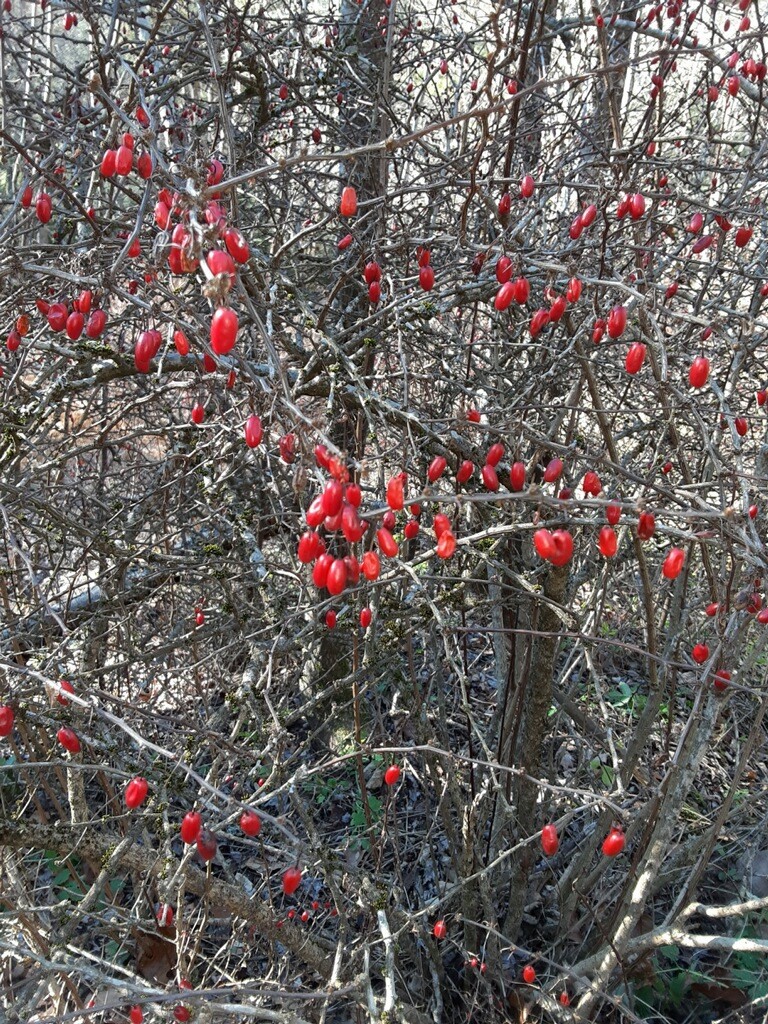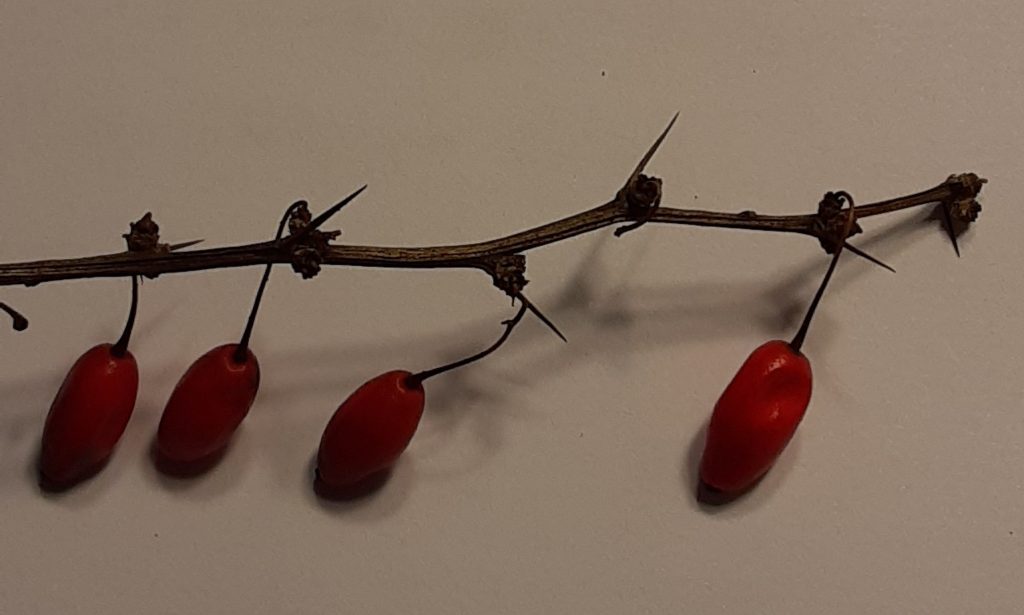By Susan Sprout
The PA Dept. of Agriculture has added this particular berry-making plant (Berberis thunbergii) to its noxious weed list as of October 8, 2021, banning its sale or cultivation. Nurseries and landscapers will have a two-year period to phase out its use in this state.
Japanese barberry’s widespread distribution in our forests where it can thrive anywhere from deep shade to sunny edges + the fact that in some places it has become a dominant understory plant since our large deer population appears to eat just about everything else and leaves it alone to reproduce + the research that has shown increased populations of the black-legged or deer ticks, known transmitters of Lyme disease, occur in areas where it abounds = three good reasons why this plant became a good candidate for the noxious weed list!

You can identify Japanese barberry during the winter when its red berries stand out against its brown twigs and sticks and by carefully checking for its armament. It is armed – with single, pointed spines growing near where the leaves used to be, on opposite sides of twigs. This plant differs from another non-native species, European barberry, Berberis vulgaris, also found growing in PA, that has three-pronged spines. Our very own native American Barberry (Berberis canadensis) also has three-pronged spines – or rather – HAD three-pronged spines. It is one of about 104 species of plants that have been judged “extirpated” or no longer existing within PA. American barberry does grow wild in West Virginia southward to Georgia, however.

Just because barberry is considered a noxious weed in some places doesn’t mean it hasn’t had a long and interesting history of usefulness to mankind. The ancient Egyptians used it in a syrup with fennel to prevent the plague. Dried and fresh roots were used to make a colorfast yellow dye for cloth, leather, and wood. Berries were made into jams and jellies or without sweetener, provided an acidic kick to the taste of salads. Berberine, a constituent of these plants, actually fluoresces under ultraviolet light, making cells under a microscope easier to study. It is used in medicines for everything from heart failure to burns and eye infections. Can’t judge a plant wholly by its aggressiveness!


